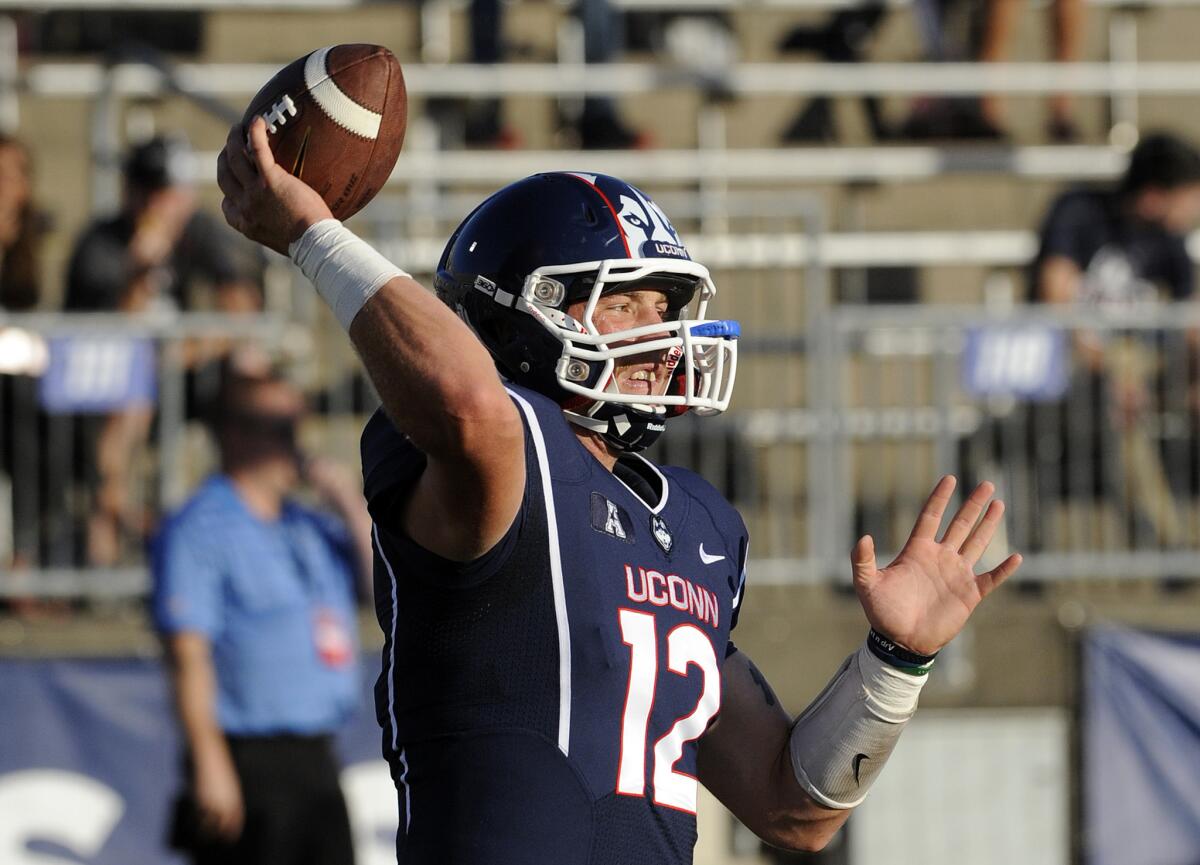Op-Ed: Football: Unsafe at any level

- Share via
In 1893, Theodore Roosevelt published an article in defense of college football. As player injuries mounted, some critics had called for a ban on the game. Nonsense, the future president wrote. “It is mere unmanly folly to try to do away with the sport because the risk exists.” Instead, he argued, reform football to “minimize” its dangers.
Sound familiar? As millions of American boys and young men take to our football fields this fall, there’s lots of talk about making the game safer. We’ve seen new rules on tackling, stronger penalties for infractions and time limits on practices.
But it’s unlikely that these changes will significantly reduce injuries. For the last century, schools and colleges have tried to modify the game so fewer people get hurt. And it hasn’t worked.
The first changes took place in the early 1900s. Before that time the game resembled rugby, with players piling on top of one another to control the ball. They could pass it sideways or backward but not forward.
The results were predictable: smashed noses, dislocated shoulders, broken necks and fractured skulls. Dozens of young men died, mostly from cerebral hemorrhage. “The sight of a confused mass of educated young men making batter-rams of their bodies, plunging their heads into each other’s stomachs, piling upon each other or maiming each other for life — sometimes indeed … killing each other … is to me a brutal monstrosity,” declared Cornell President Andrew D. White in 1891.
Fourteen years later, having ascended to the White House, Roosevelt convened a meeting of coaches from Harvard, Yale and Princeton. Amid newspaper reports of 18 football deaths that fall, the 1905 meeting set in motion a series of reforms to protect players from injury — and to guard the sport from critics who wanted to end it altogether.
The most controversial innovation was the forward pass, which would spread players more widely and decrease the amount of contact between them. But the leading opponent of the reform, Yale coach Walter Camp, warned that players streaking downfield would face even greater danger than the ones clumped together near the line of scrimmage. Camp turned out to be correct.
The recent increase of concussions — at every level of the sport — is partly due to “pass-first” offenses, which have led to more high-speed collisions. By stopping the game clock for incompletions, passing has also increased the total number of plays and, with it, the opportunities for injury.
Ditto for helmets, another reform designed to reduce harm on the field. In the early years of the game, some players grew their hair long to provide a modicum of head protection. Others began to wear leather helmets, which were developed by an Annapolis shoemaker to protect a Navy midshipman after the player’s doctor told him that he might die from another hit to his head.
Enter the plastic helmet, which provided more cushioning. But it also became a weapon in its own right, allowing players to “lead with their heads” as they tackled. Despite new restrictions on that practice, helmet-to-helmet hits remain one of the key causes of concussions and other injuries.
And the most common victims are kids, who are starting football at ever-younger ages. Their necks aren’t fully developed, so they can’t brace for a hit the way adults can. And their braincases haven’t finished hardening, which makes their skulls more vulnerable to impact.
By the time they get to high school, kids have a 5% chance of sustaining a concussion for each season they play. And as a 2011 study showed, former football players who sustained two or more concussions in their youth have a significantly higher rate of cognitive impairment as adults.
The issue made its way back to the White House in May, when President Obama convened a meeting of coaches, doctors and scientists to discuss sports-related concussions. But the most powerful voice in the room was one that didn’t exist back in Roosevelt’s time: the National Football League.
A judge recently approved a settlement to compensate retired NFL players suffering the effects of head injuries that is likely to cost the league several hundred million dollars. It also announced this year that it would donate $45 million to the youth organization it founded, USA Football, in part to expand safety training for coaches.
As the richest sports enterprise in America, the NFL can absorb almost any legal hit that comes its way. But our high schools can’t. And the league needs them to continue sponsoring football teams, which — alongside college squads — are the main training system for the pros.
If he had a son, the president said last year, he’d “have to think long and hard” before letting him play football. But the rest of us need to think long and hard too about why we’re putting so many kids at risk to subsidize a league that’s already awash in money. And if we think we can wash away the risk, we’re kidding ourselves.
Jonathan Zimmerman teaches history and education at New York University. He is the author of “Too Hot to Handle: A Global History of Sex Education,” which will be published in 2015.
Follow the Opinion section on Twitter @latimesopinion
More to Read
A cure for the common opinion
Get thought-provoking perspectives with our weekly newsletter.
You may occasionally receive promotional content from the Los Angeles Times.










